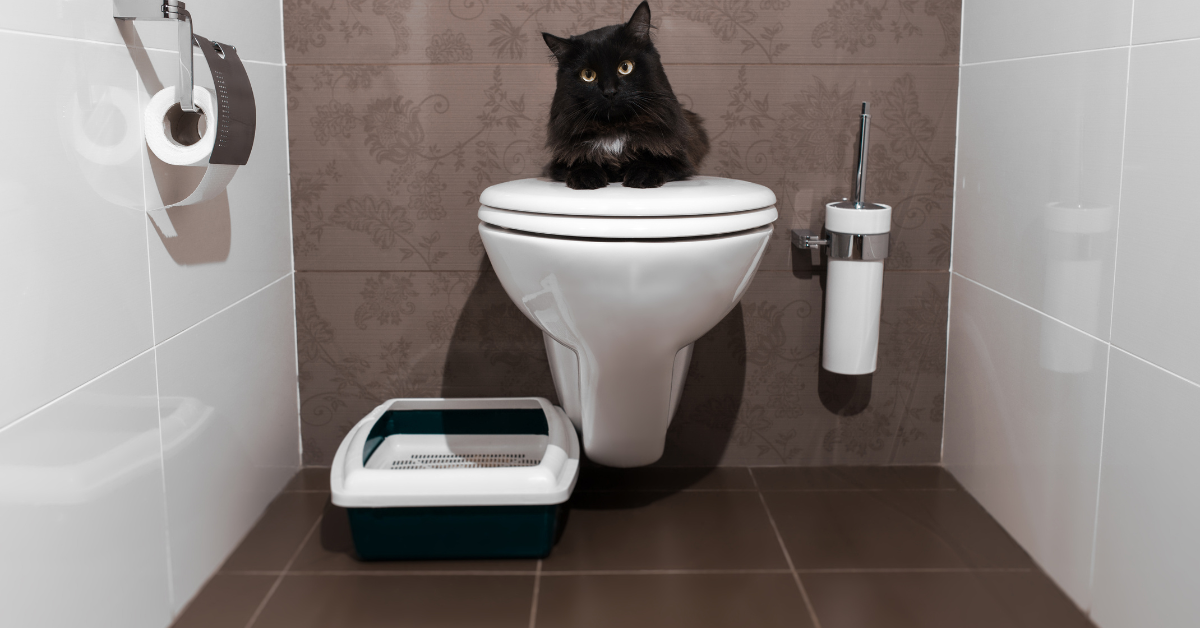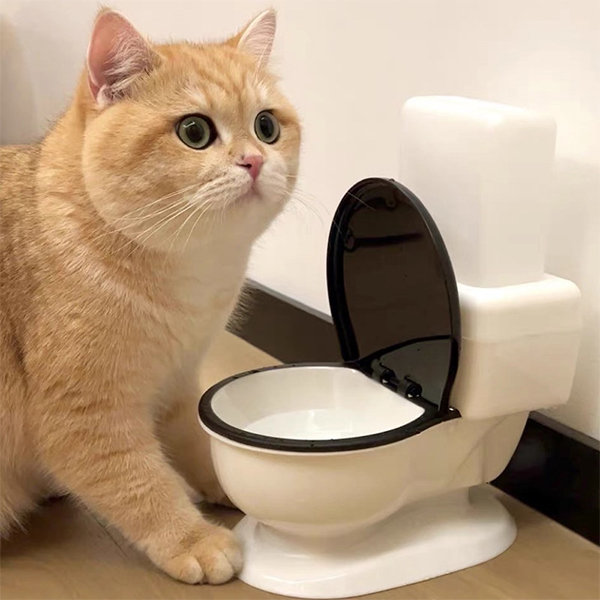We've uncovered this great article relating to Don't Flush Your Pets Poo Down The Loo, Vet Warns directly below on the web and believe it made good sense to share it with you in this article.

When it concerns getting rid of waste, specifically animal waste, many individuals commonly consider the practical option of flushing it down the bathroom. Nonetheless, this apparently very easy service can have severe consequences for the atmosphere and public health. In this short article, we'll explore why flushing animal waste down the commode is a bad concept and provide different methods for correct disposal.
Intro
Appropriate waste disposal is essential for maintaining ecological sustainability and public health. While it might seem safe to purge animal waste down the toilet, it can cause different issues, both for the environment and human health.
Risks of flushing animal waste
Environmental effect
Flushing animal waste presents dangerous microorganisms and pathogens into rivers, which can adversely affect marine communities. These microorganisms can infect water sources and damage marine life, interrupting delicate ecological communities.
Public health worries
Pet waste contains unsafe microorganisms such as E. coli and Salmonella, which can pose major wellness risks to human beings. Flushing pet waste down the bathroom can pollute water materials, bring about the spread of diseases and infections.
Alternatives to flushing
Instead of flushing pet waste down the toilet, there are numerous alternative disposal methods that are a lot more eco-friendly and hygienic.
Composting
Composting pet waste is an eco-friendly method to dispose of it. By composting, raw material is broken down right into nutrient-rich dirt, which click here can be utilized to fertilize yards and plants.
Land fill disposal
Disposing of pet waste in a land fill is another option. While not as eco-friendly as composting, it is a safer alternative to flushing, as it protects against the contamination of water sources.
Family pet waste disposal systems
There are specialized pet garbage disposal systems available that securely and hygienically get rid of pet waste. These systems typically use enzymes to break down waste and eliminate smells.
Actions to appropriate pet garbage disposal
To ensure appropriate disposal of pet waste, adhere to these steps:
Scooping and nabbing waste
Consistently scoop and bag pet waste utilizing naturally degradable bags. This protects against waste from polluting the environment.
Utilizing assigned waste containers
Dispose of bagged pet waste in assigned waste containers, such as garden compost containers or garbage dump bins. Prevent flushing it down the commode whatsoever expenses.
Cleansing can and pet dog areas routinely
Frequently clean can and family pet locations to avoid the buildup of waste and microorganisms. Usage pet-safe cleaning products to keep hygiene.
Benefits of correct disposal methods
Adopting appropriate disposal methods for pet waste supplies several benefits:
Lowered environmental pollution
Correct disposal methods minimize the risk of environmental pollution, securing waterways and communities from contamination
Lessened threat of water contamination.
By preventing flushing animal waste down the toilet, the danger of water contamination is considerably lowered, safeguarding public health.
Boosted sanitation and hygiene
Appropriate disposal approaches promote far better hygiene and hygiene, creating a more secure atmosphere for both humans and pets.
Final thought
In conclusion, flushing animal waste down the toilet is hazardous to the environment and public health. By embracing alternate disposal techniques and complying with correct waste monitoring techniques, we can reduce the unfavorable impact of animal waste and add to a cleaner, healthier planet.
What To Do With Dog Poo – The Do's And Don'ts Of Disposing Of Faeces
Dog poo bins
Some councils provide dedicated dog waste bins in popular dog-walking areas that can take dog poo that has been bagged but you can legally dispose of dog waste in any public litter bin, as long as it is securely bagged. This also applies to your wheelie bin at home.
Do not flush
Water companies do not recommend flushing dog faeces down the toilet because certain parasites can survive the water processing treatment and are potentially harmful to humans. You should also never consider flushing dog poo that has been bagged down the toilet as the bags will not break down and instead create severe blockages in the sewage system.
In the woods
The Forestry Commission promotes a ‘stick and flick’ method for dealing with waste in the woods. This means finding a stick and using it to flick any poo from off the path so that it is out of the way of other walkers. You could also bury it as long as it is not in an area where there might be livestock.
Livestock
Parasites found in dog poo can be transmitted to livestock if they inadvertently eat infected faeces that has been left on grazing land. This could result in the death of sheep or abortion in cattle so you should always make sure you pick up your dog’s waste in fields where livestock could be present.

Frequently clean can and family pet locations to avoid the buildup of waste and microorganisms. Usage pet-safe cleaning products to keep hygiene.
Benefits of correct disposal methods
Adopting appropriate disposal methods for pet waste supplies several benefits:
Lowered environmental pollution
Correct disposal methods minimize the risk of environmental pollution, securing waterways and communities from contamination
Lessened threat of water contamination.
By preventing flushing animal waste down the toilet, the danger of water contamination is considerably lowered, safeguarding public health.
Boosted sanitation and hygiene
Appropriate disposal approaches promote far better hygiene and hygiene, creating a more secure atmosphere for both humans and pets.
Final thought
In conclusion, flushing animal waste down the toilet is hazardous to the environment and public health. By embracing alternate disposal techniques and complying with correct waste monitoring techniques, we can reduce the unfavorable impact of animal waste and add to a cleaner, healthier planet.
What To Do With Dog Poo – The Do's And Don'ts Of Disposing Of Faeces
Dog poo bins
Some councils provide dedicated dog waste bins in popular dog-walking areas that can take dog poo that has been bagged but you can legally dispose of dog waste in any public litter bin, as long as it is securely bagged. This also applies to your wheelie bin at home.
Do not flush
Water companies do not recommend flushing dog faeces down the toilet because certain parasites can survive the water processing treatment and are potentially harmful to humans. You should also never consider flushing dog poo that has been bagged down the toilet as the bags will not break down and instead create severe blockages in the sewage system.
In the woods
The Forestry Commission promotes a ‘stick and flick’ method for dealing with waste in the woods. This means finding a stick and using it to flick any poo from off the path so that it is out of the way of other walkers. You could also bury it as long as it is not in an area where there might be livestock.
Livestock
Parasites found in dog poo can be transmitted to livestock if they inadvertently eat infected faeces that has been left on grazing land. This could result in the death of sheep or abortion in cattle so you should always make sure you pick up your dog’s waste in fields where livestock could be present.

I hope you enjoyed reading our post about . Thank you so much for taking the time to read our short article. Are you aware of somebody who is occupied with Can You Flush Dog and Cat Poo Down the Toilet?? Take a moment to share it. Thanks a lot for your time spent reading it.
Call